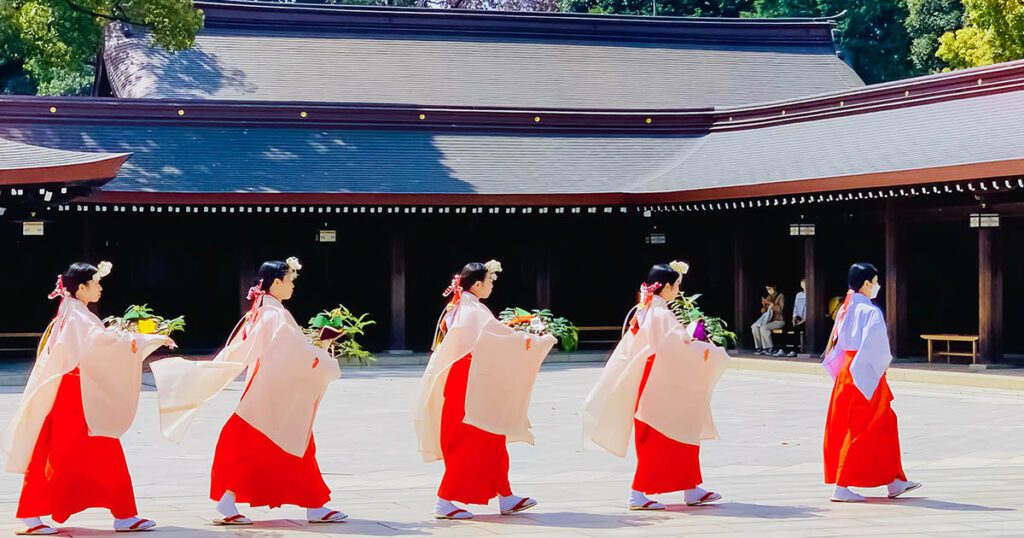Meiji Shrine (Meiji Jingu Shrine) is the most significant and iconic Shinto shrine in Tokyo. The shrine is related to the Japanese royal family and is dedicated to Emperor Meiji and Empress Dowager Shoken, built in 1920 over 170 acres of land. Devotees go there to pray so that the spirits bring good luck to them.
Moreover, the shrine has barrier free access, and the shrine is wheelchair accessible. Some bloggers say it mixed bag accessibility for slow walkers. However, it’s a great place to visit.
Table of Contents
Location:
Meiji Shrine is the biggest Shinto shrine in Tokyo, situated in Shibuya Ward, measuring 170 acres of vast land. The official name of the shrine is Meiji Jingu.
The Royal family members perform their religious rituals in this shrine, which is also familiar as Tokyo’s Royal shrine.
At the same time, this densely forested shrine is a great place to spend some time for spiritual retreats, forgetting all the noisy city life. Tall trees surround the shrine, which is rare to see in Tokyo.
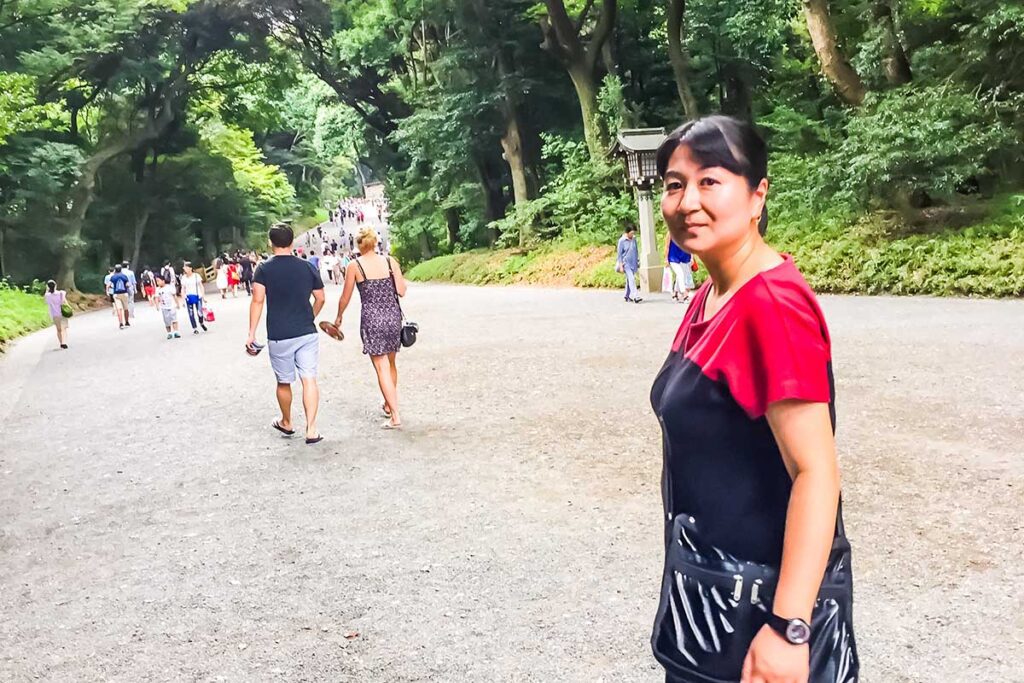
During Hatsumode, around 3 million people visit Meiji Shrine in the first three days, keeping Sensoji Temple in second position and Yasukuni Shrine in third.
It is located near Harajuku Station of the JR Yamanote Line and the adjacent Yoyogi Park. Besides, it’s only a short walk from NHK Headquarters.
Features:
a) the biggest Shinto Shrine in Tokyo
b) royal family shrine
c) a shrine dedicated to Emperor Meiji
d) approximately 120,000 trees on 170 acres
e) bring good fortune
f) easily accessible
History:
Meiji Shrine was built and dedicated to Emperor Meiji and Empress Shoken in 1920. It is just eight years after the passing of the emperor and six years after the passing of the empress.
The shrine buildings were constructed in the Nagare-zukuri architectural style designed by Ito Chuta and Sekino Tadasu, a professor of Tokyo Imperial University (now University of Tokyo), including Meiji Kinenkan. Nagare-zukuri architectural style is the Japanese traditional Shinto shrine style.
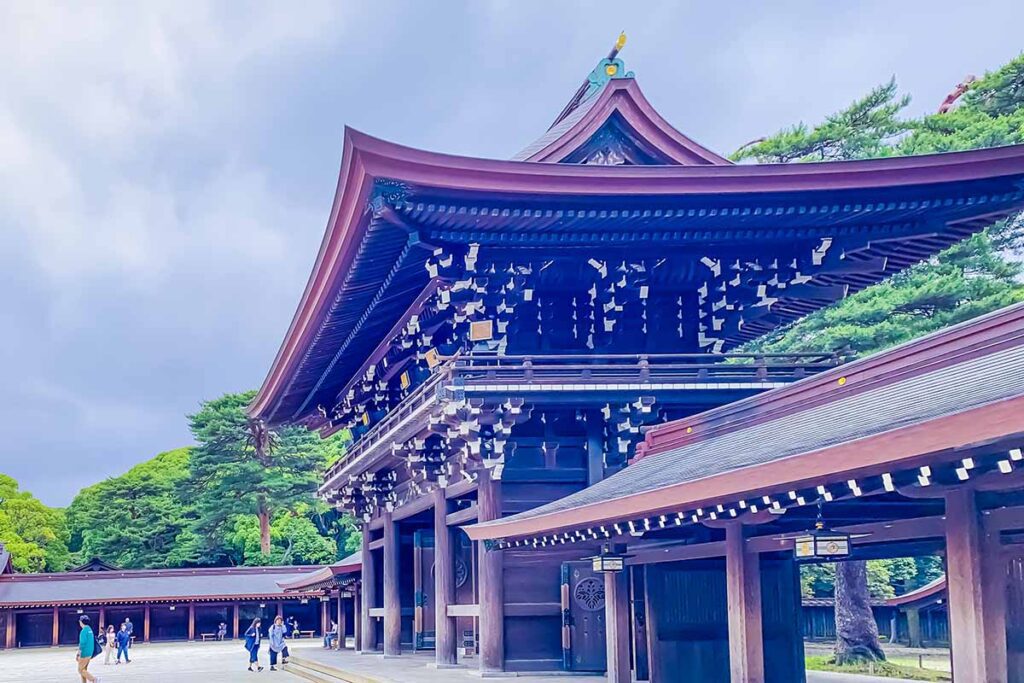
Unfortunately, the shrine was destroyed by air raids in the Second World War but was rebuilt shortly with public donations in 1958.
It has been a royal family shrine since the Emperor Meiji Period. Most festivals and events are also royal family-related, or the royal family performs their religious duties here.
Meiji Shrine is a significant Shinto shrine in Tokyo because of its direct royal family connections and historical background.
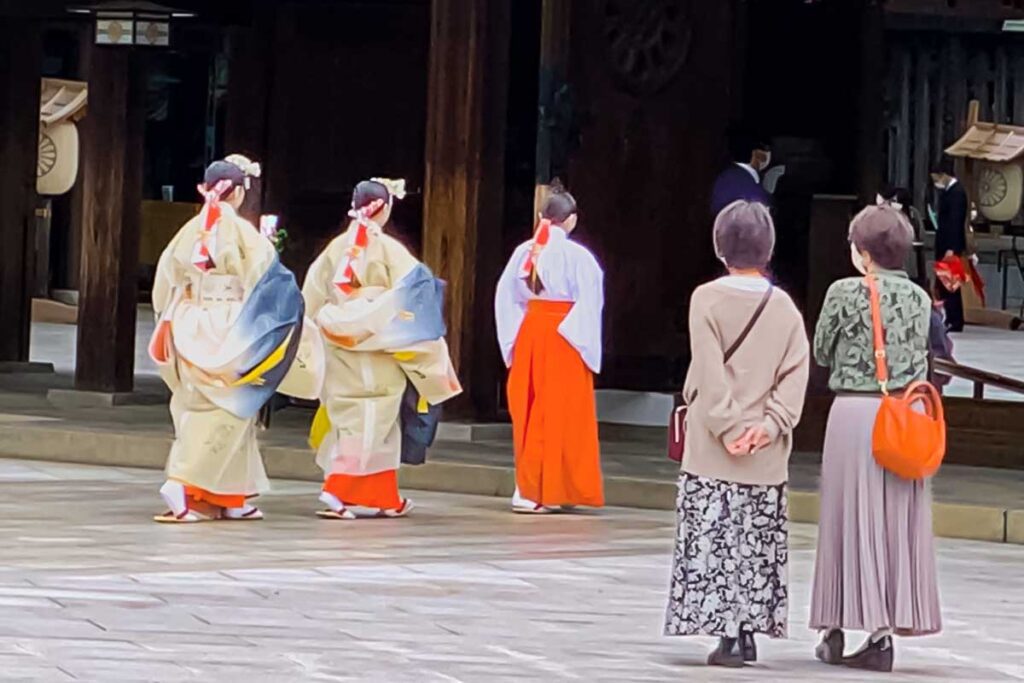
Moreover, according to the Japanese edition of national geographic, the spot was chosen among the 40 famous places to build Meiji Shrine. Even before the shrine builds up, the forest itself is considered holy.
At the same time, to make the forest perfect for the shrine, two forestry experts, Kawase Zentaro and Honda Seiroku, designed the forest, and which Imperial Household Agency oversaw the project.
Famous Tourists spot:
There are numerous things to see here, as Meiji Jingu is the most significant Shinto shrine in Tokyo.
Beautiful gardens and cedar trees surround this holy Shinto shrine. Meiji Shrine is a religious site and a tourist spot where people can be free from the city’s hustle and bustle.
On the other hand, it is a royal family shrine with a background from ancient times. Besides, the shrine itself is a historical landmark of the royal family.
As a result, tourists are eager to see the Meiji Shrine as a royal family shrine during Tokyo trips. In addition, many high-ranking foreign politicians visited Meiji Jingu Shrine, including United States President W. Bush.
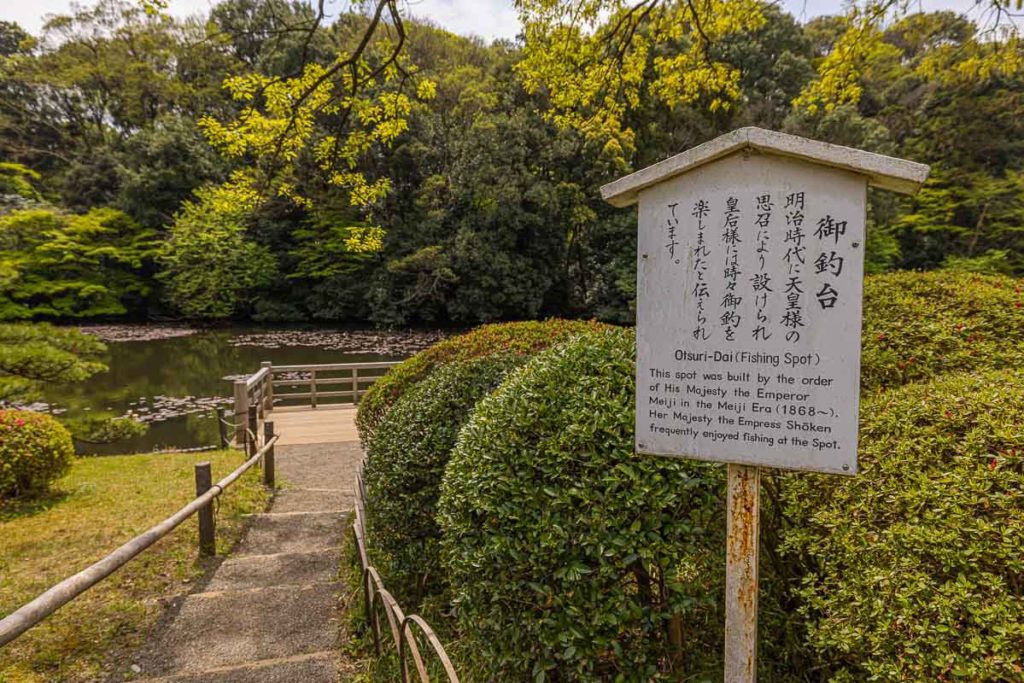
According to the famous spot list of Tokyo, the most visited places are the Imperial Palace, Asakusa Sensoji Temple, Meiji Shrine, Skytree, and Gotokuji Temple.
No matter from which country tourists come, they want to visit these spots.
The reasons for visiting Meiji Shrine may be different. However, one reason is in common- they do not want to miss seeing it.
Overall, the shrine’s environment is serene and covered with tall trees, a pleasant backdrop to visit any season.
However, the most significant things tourists can enjoy relatively-
1) First Torii gate:
The first tori gate(Ichino Torii) is near the main road, just next to the Meiji Jingumae station.
The Ichino Torii borders the common public place and sacred area.
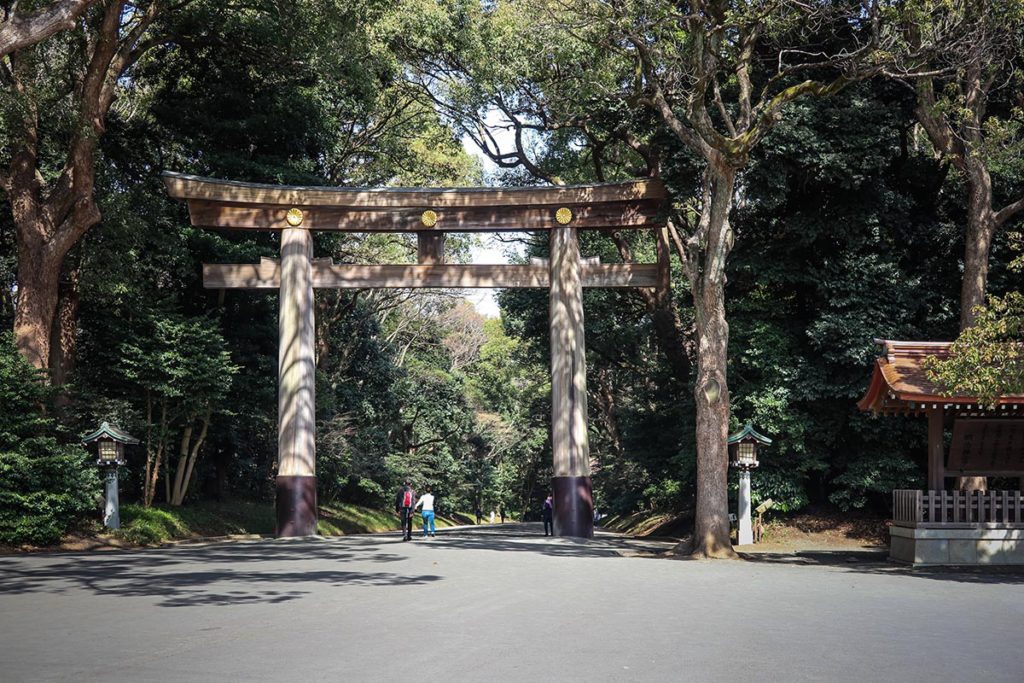
There are a few good coffee shops in front of the First Tori gate. Visitors can refresh them before entering the shrine with coffee or takeout.
2) Meiji Museum:
Soon after passing, the first tori gate, Meiji Jingu Museum, opened in October 2019.
It is a different angled Japanese-roof-styled building under the trees on the right side of the road.
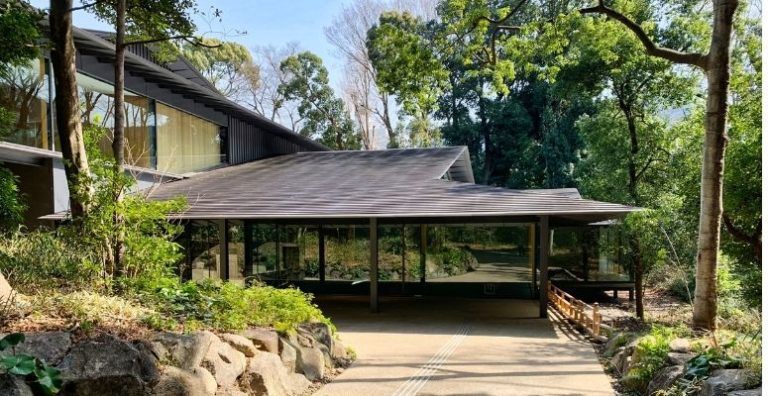
The museum is related to Emperor Meiji and his life-related. It is not free.
However, the museum is worth visiting for historical and cultural purposes. Besides, it’s a museum dedicated to a great emperor to whom people pray for divine protection.
3)Sake Board:
There are two Japanese Sake barrels display boards in front of the Forest Terrace. Visitors can understand how big barrels are used for sake.
Yes! All wine Barrels are wrapped in straw.
Straw and Sake are both sacred elements in Shintoism. Drinking sake, in Shintoism, is an act of purification. On the other hand, Shimenawa, made from straw, is Sacred Rope in Shinto Religion.
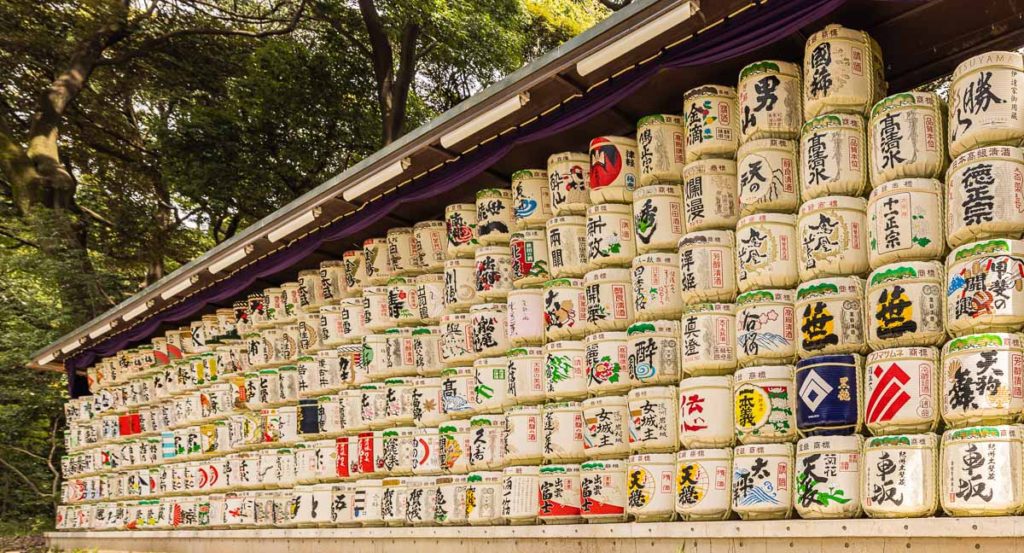
So, famous Japanese brands donate sake containers to the shrine for business blessings.
On the other hand, the shrine displays colorful containers on the massive display boards. In addition, visitors can see two large sake container boards on the left and right of the road.
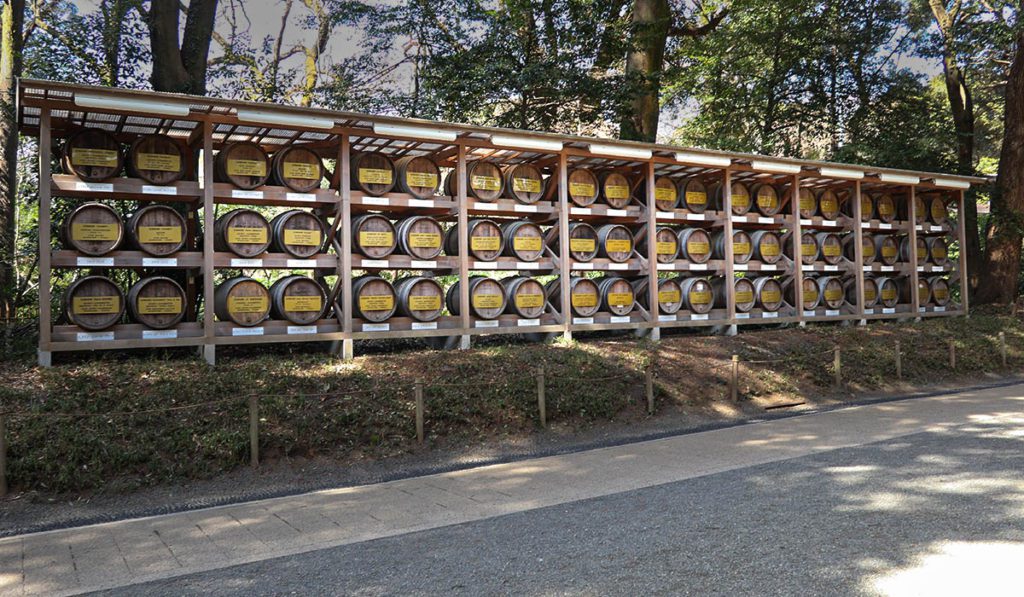
More importantly, visitors can enjoy lunch at Forest Terrace. One of the best food items is mochi.
Mochi is baked in coal traditional way and served with bean paste.
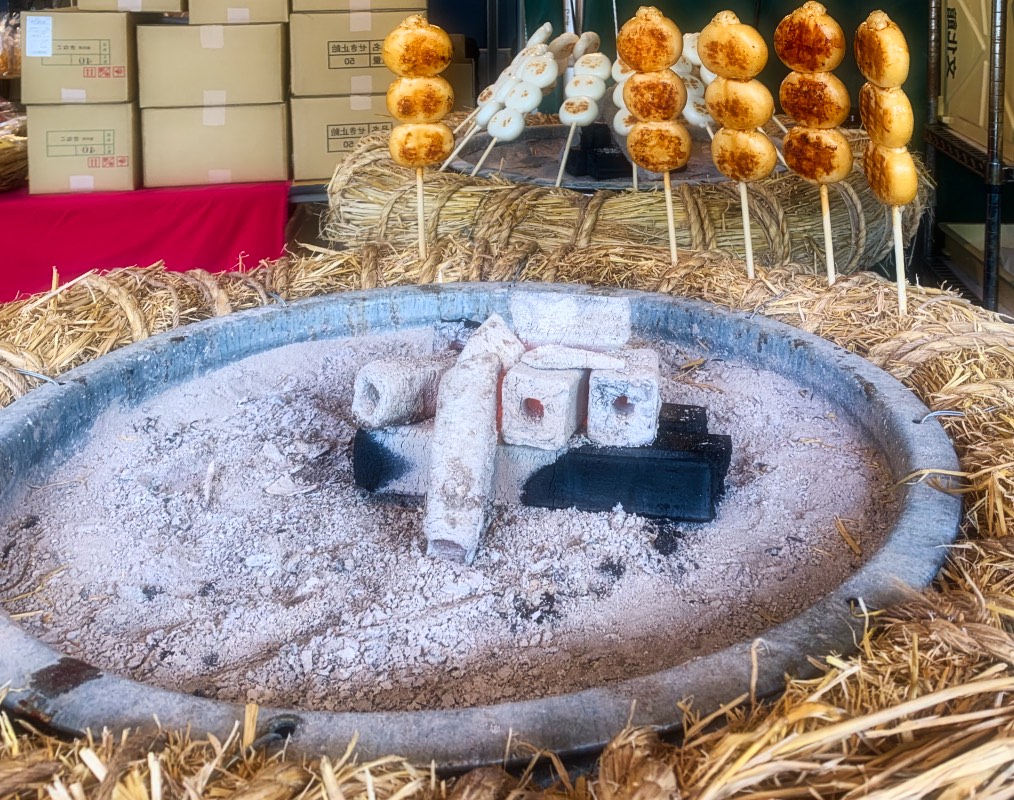
Moreover, it is an excellent place to see how people used to cook mochi a hundred years ago.
Besides, cooked mochi is one popular Tokyo street food that is tremendously delicious.
4)Second Torii gate:
The second torii(Nino Tori) gate of the Meiji Shrine is vast. The height of the torii is 12 meters, and it has a span of 9.1 meters.
It is the largest wooden torii in Japan. This torii gate leads visitors to the main shrine through Minamijinmon.
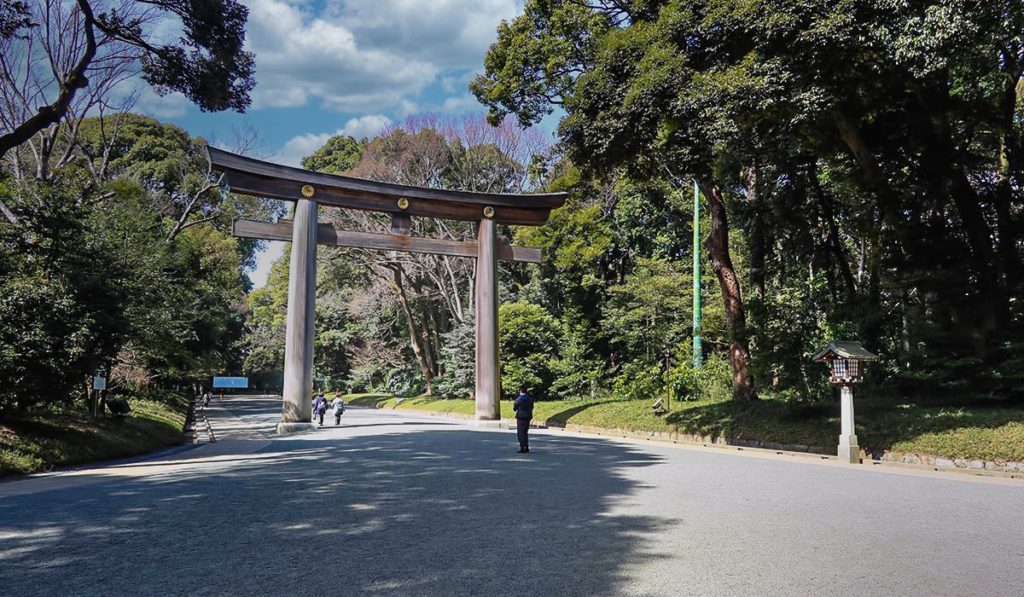
At the same time, a path went on the right leads visitors to enter the shrine through Higashijinmon. But, this is not popular with tourists.
Moreover, it is one of the most famous photo spots in Tokyo. Remember to take a selfie with Japan’s largest wooden torii gate.
Kiyomasa Garden people call Meiji Jingu Inner Garden.
Meiji Inner Garden is famous for its beautiful garden and an old historic Well. It also has a lovely lake, tea house, and walking paths near the iris garden.
A small well within the garden is known as Kiyomasa’s Well. The name of the well came from a military commander and Samurai Kato Kiyomasa, who dug it 400 years ago.
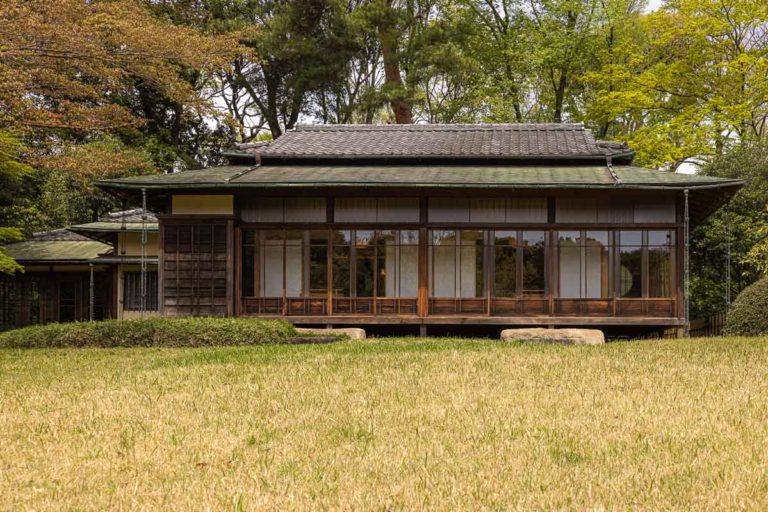
The emperor and empress visited the well while they were alive, and it has become a popular spiritual power spot.
Some religious events are performed here. Besides, the area is pleasant.
It especially becomes very lively with many tourists during Iris flower season. Besides, some small animals live here which look like raccoons.
However, the garden has a small entrance fee per person, 500 Yen.
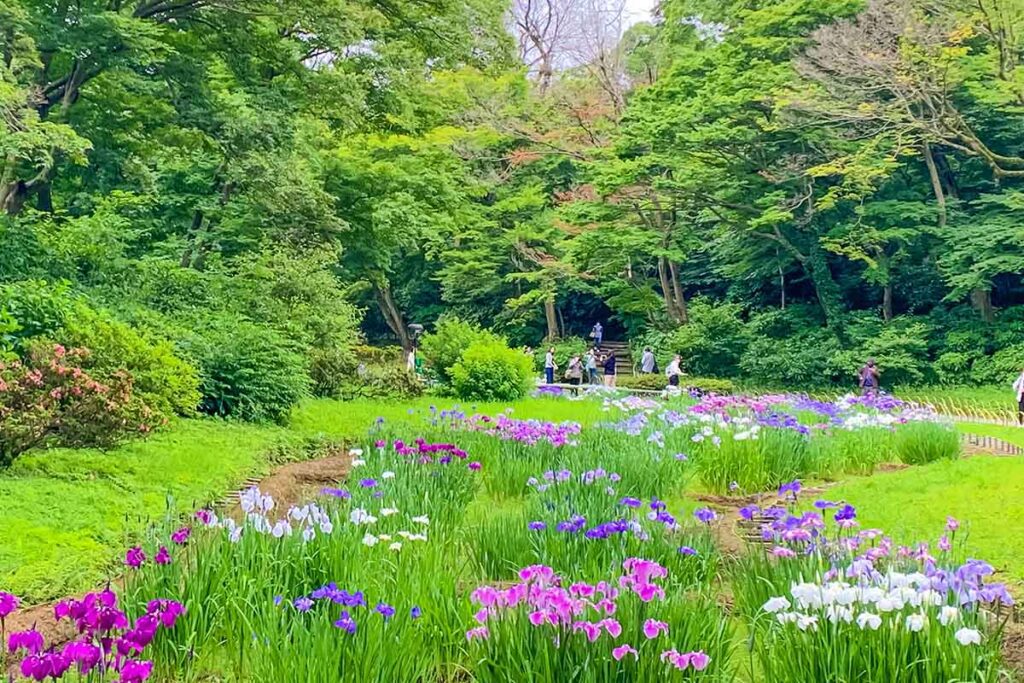
But it is no entrance fee. Instead, it says donations for the maintenance of the garden.
On the other hand, Meiji Jingu Shrine has an outer garden, Jingu Gaien Park, where Meiji Memorial Picture Gallery is located, next to National Stadium.
Besides, one of the parts of the park, called Jingu Gaien Gingko Avenue, is the best place to see golden Autumn leaves in Tokyo.
Read more about the Meiji Shrine Inner Garden
6)Third Tori gate:
The third torii gate(Sanno Torii) is next to handwashing and before the Ema counter.
From the third torii gate to the main Sanctuary is a straight line. So, visitors can see the main Sanctuary through the Minamijinmon from the 3rd Torii gate.
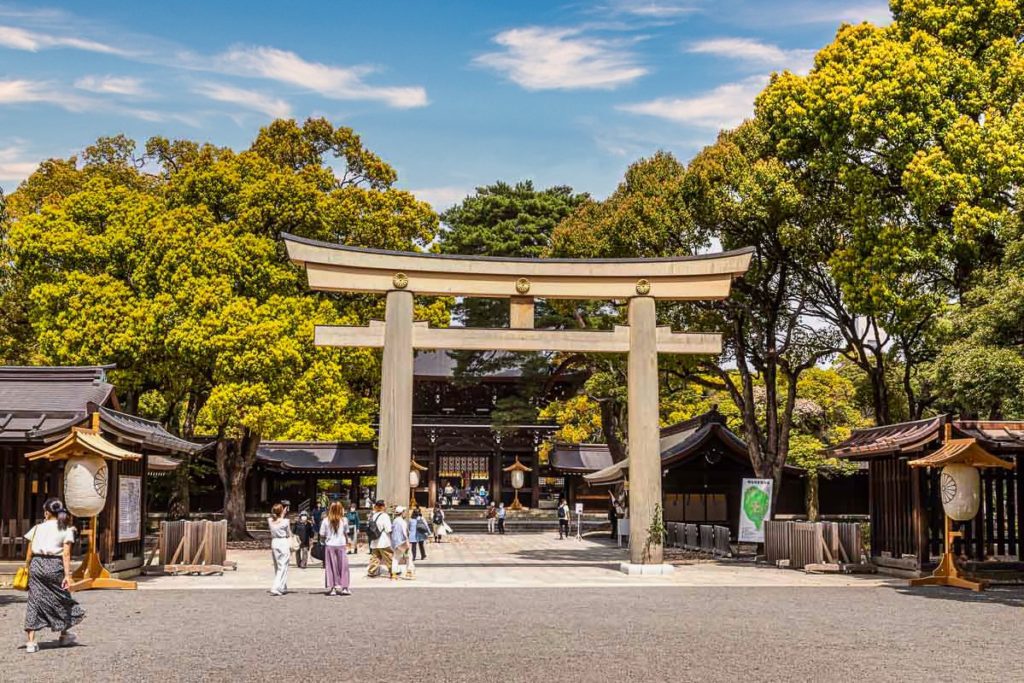
After passing Third Tori Gate, you’ll see the ema store on the right. The store sells lovely wooden ema with inscribed prayers. Visitors can buy and hang in front of the shrine to fulfill their wishes.
7) Minamijinmon:
Minamijinmon is the straight line of the main Sanctuary.
Besides, the two-story Minamijinmon is the most significant gate, made with Japanese cypress. The gate is majestic in colorful, craving wooden structures.
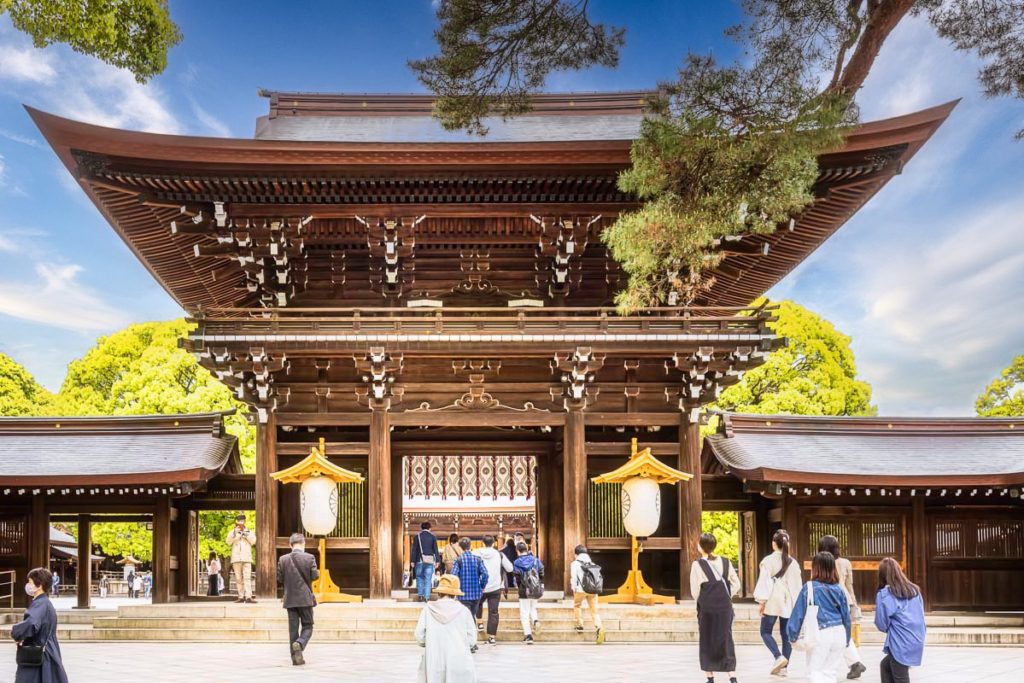
It’s the most beautiful gate of the shrine. The design and structure amaze visitors.
In addition, Minamijinmon is the gate priests usually enter the central premise of the shrine during the events.
8) Main Sanctuary:
The main Sanctuary (main shrine) is surrounded by Sukibei Wall, like Nezu Shrine‘s Main Hall. Main Shrine is divided into two precincts, the inner precinct and the outer precinct.
On the other hand, the inner precinct has three important buildings: Gehaiden, Nihaiden, and Treasure Museum (treasure house).
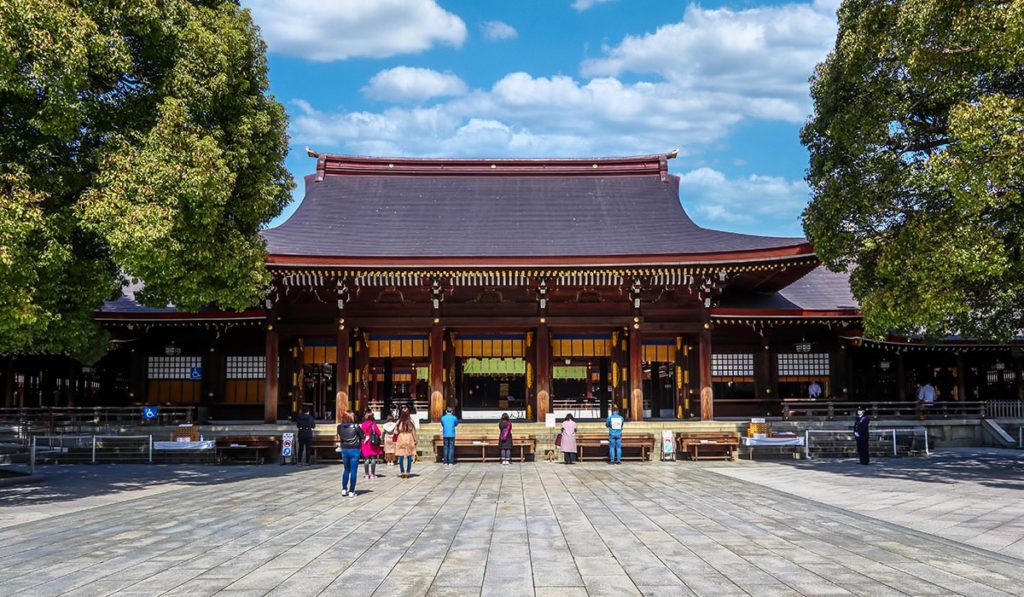
But visitors can only arrive outside the Gehaiden and offer their prayer there.
After Gehiden is Naihaiden, considered the holiest place, only priests can go there. After that, of course, devotees can enter here. But they need advance permission.
In addition, there is an open space between Geheiden and Naihaiden, surrounded by like Sukibei Wall with seats. This is the place where all ceremonies take place.
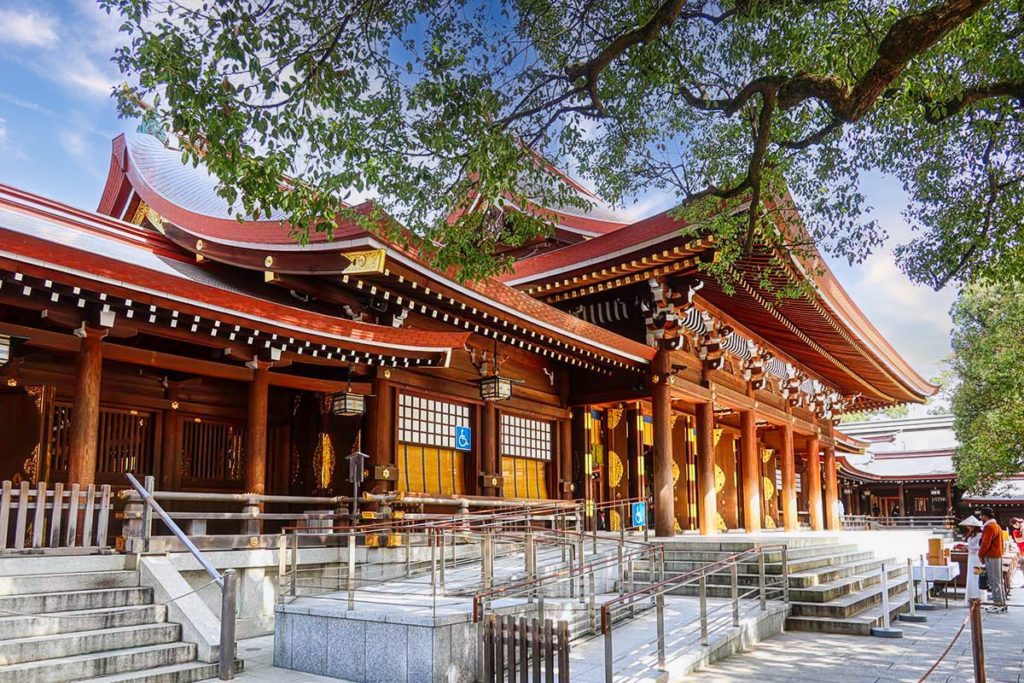
So, tourists need extra permission to enter Mejiji Treasure Museum, which contains Emperor Meiji and Empress Shoken’s belongings.
Tourists can arrive at Gehiden from three main gates, Minamijinmon, Higashijinmon, and Nishiijinmon. At the same time, these three gates are to the central premise of the main Sanctuary.
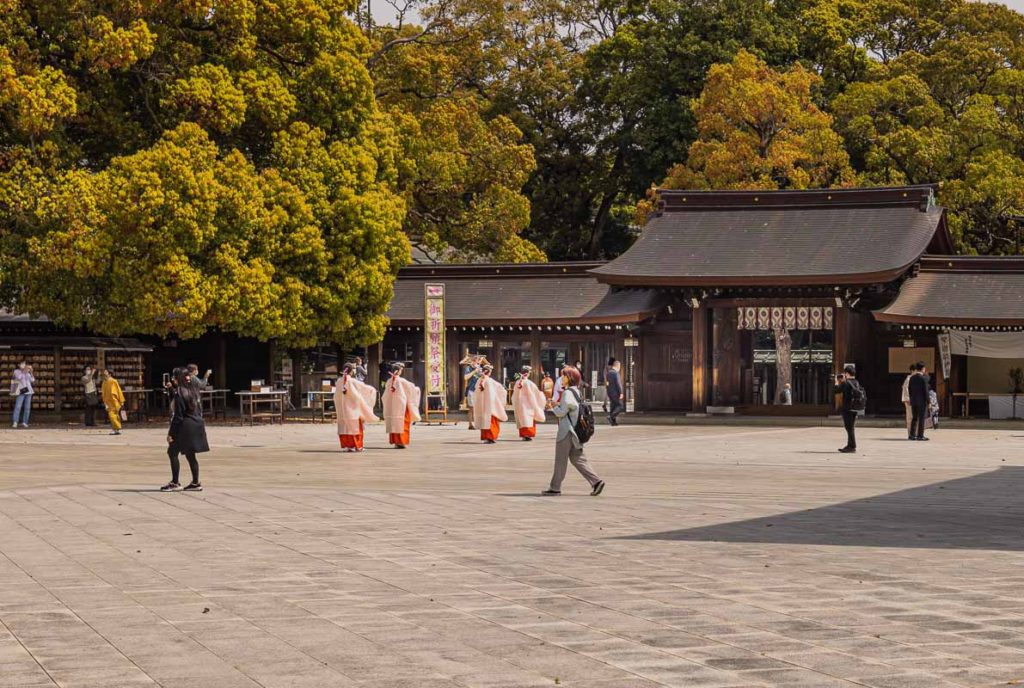
Minamijinmon is straight from the main Sanctuary, which most people usually use. But people also can use Higashijinmon on the left and Nishiijinmon on the right.
However, those who enter through Higashijinmon and Nishijinmon must come under the tori gate.
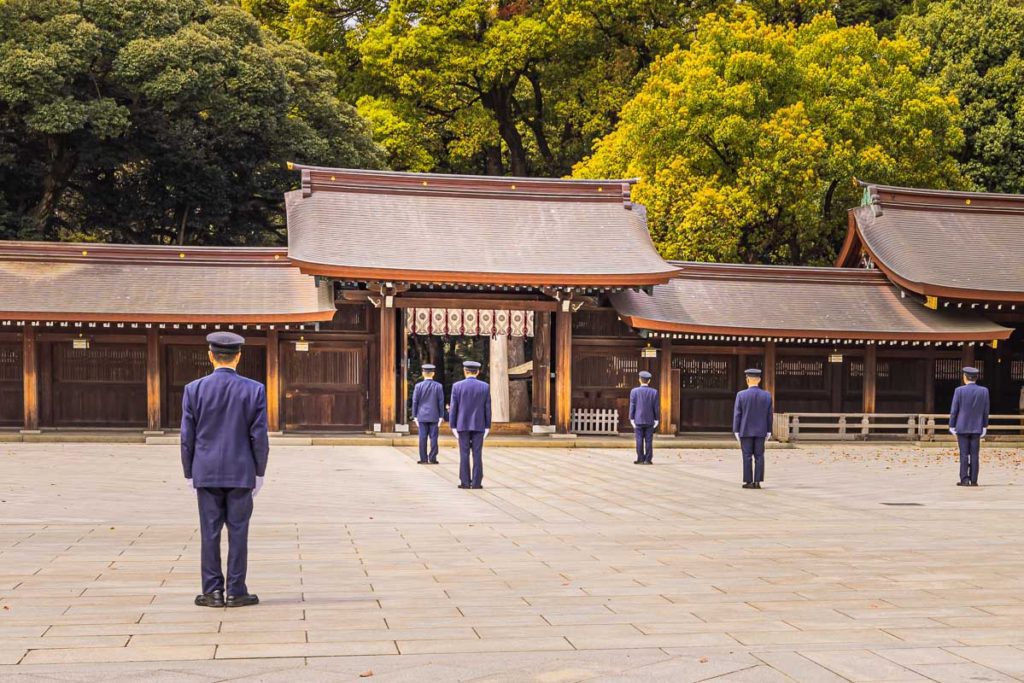
Two Tamagaki Torii are set up before Nishijinmon and Higashijinmon so that visitors know that they are entering the central sanctuary premise.
The central sanctuary premise is huge. Visitors can see here how a Japanese wedding ceremony takes place.
9)Camphor trees:
The most exciting part for husband and wife is two Camphor trees in front of the main Sanctuary. These trees were planted in 1920.
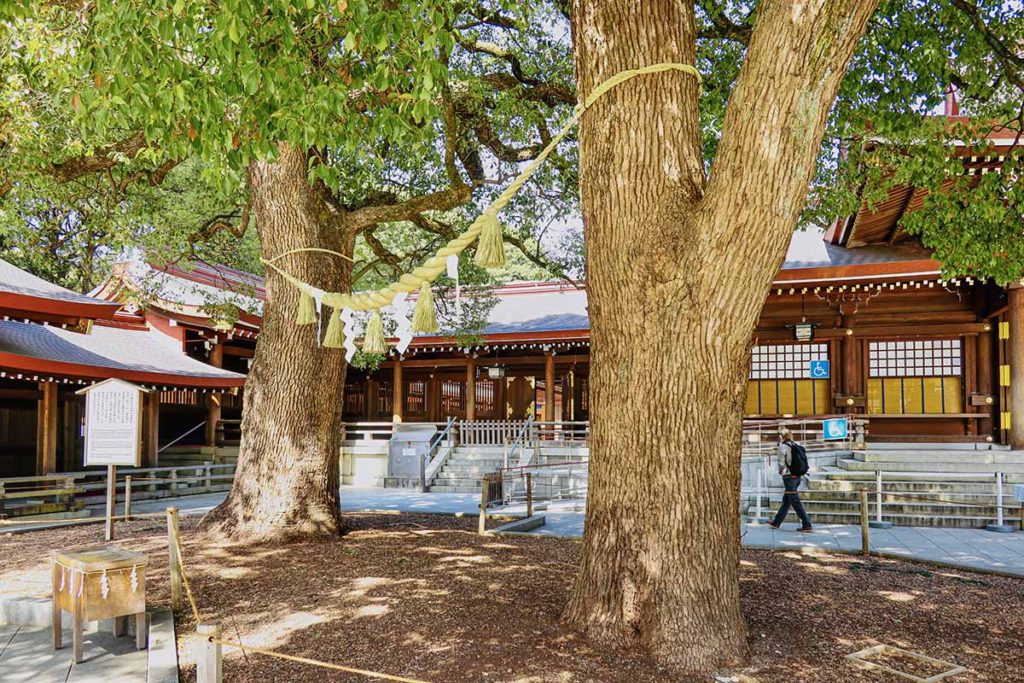
These couple trees are familiar as ‘Meoto Kusu’ (husband & wife), tied with a sacred rope, considered a happy and harmonious couple life.
Besides the important meaning o these trees, these secret trees have carried a long history.
Annual Events:
Some of the festivals and events are very famous in Meiji Shrine. Among these ceremonies, prayer for newborn babies, Hatsumiy-Mairi, at the age of 5 years boys and 3 and 7 years old girls, the Shichi-Go-San ceremony, and 20 Coming of Age Day are extraordinarily famous.
Besides, annual festivals such as Hatsumode, Spring Festival, and Autumn Grand Festival are very famous.
According to Japanese tradition, everyone visits a shrine or temple in the New Year. Therefore, visiting a shrine or temple for the first time in the year became a traditional festival, and people call it Hatsumode.
But people usually start visiting from midnight of the New Year to the first week of the year. So Meiji Shrine is the top where people want to pray on their first visit of the year.
The shrine gets more devotees than any other shrine or temple in Tokyo. As I mentioned above, the devotees visit the shrine from New Year(midnight) to January first week more than 3 million.
2) Empress Shoken Memorial Ceremony:
Empress Shoken Memorial Ceremony is celebrated on April 11 every year.
Hundreds of people gather in front of the Main Hall of the Meiji Shrine to honor Empress Shoken.
Empress was born in 1849 and died in 1914. She was very much respected not only for her royal family status but also for her social welfare.
She had great support for women’s education, public life, and even the establishment of the Japanese Red Cross Society.
However, Empress Shoken is remembered every year, and a Memorial Ceremony is held in April at Meiji Shrine.
The ceremony starts at 10:00.
The ceremonial royal priesthood enters and leaves the hall after the program very gentle and disciplined manner.
The Meiji Shrine Spring Grand Festival takes place on May 2nd-3rd every year. Thousands of people join in the celebration.
The program usually starts at 10:00 in the morning on 2nd May.
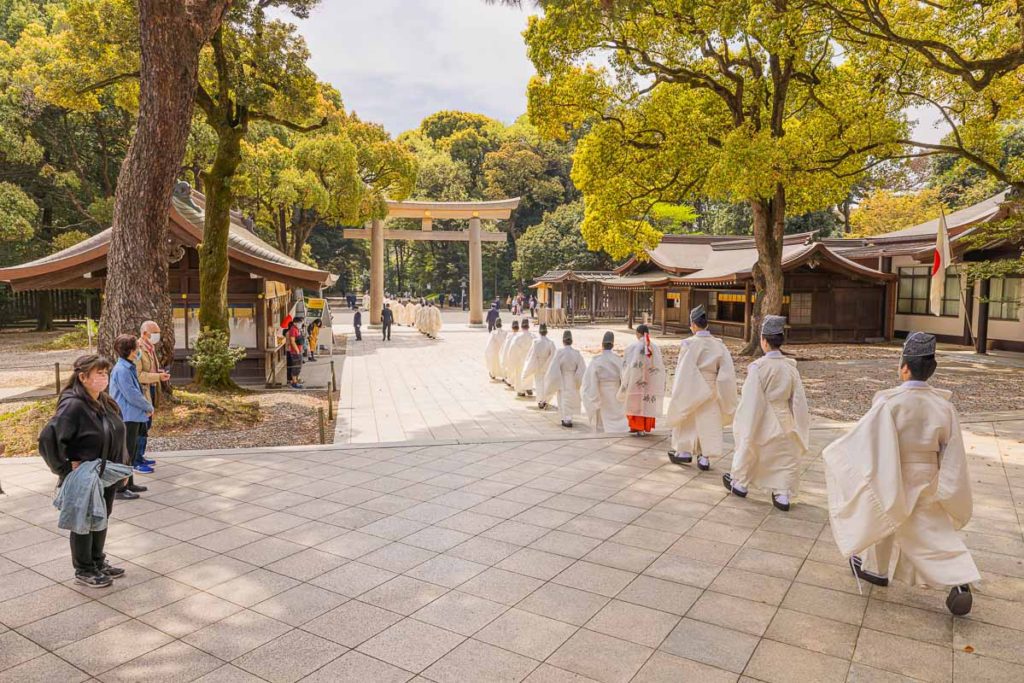
Golden Week starts in Japan, and offices, schools, and colleges are closed during this time.
As a result, many people get a chance to attend the festival.
4) Emperor Meiji related-ceremony:
Two famous ceremonies are related to Emperor Meiji Autumn Grand Festival and Meijitenno-sai.
The Autumn Grand Festival Anniversary is held on November 3 to remember Emperor Meiji’s Birthday, and Meijitenno-sai is the Death Anniversary of Emperor Meiji (July 30, 1912).
Emperor Meiji, the first emperor of modern Japan, was born in 1852 and became emperor in 1867.
Emperor Meiji was the 122nd Emperor of Japan and reigned from February 3, 1867, to July 30, 1912, until his death. He was the first emperor who modernized Japan and taught the Japanese nation the importance of building relationships with other countries.
His period was a bridge between a feudal isolationist country and a capitalist, industrialized world power known as the Meiji Restoration.
Festivals’ short-cut dates:
- Sumo ceremony on January 6: – The Champion is honored on the shrine grounds.
- National Foundation Day Festival on February 11.
- Hinamatsuri on February 26 (Japan’s traditional doll festival)
- Grand Spring Festival on May 2nd-3rd
- Empress Shoken Memorial Ceremony on April 11
- Emperor Meiji Memorial Festival on July 30
- Grand Autumn Festival (fall festival) on Nov 1st-3rd: Emperor Meiji’s Birthday
- Year-End Ritual & Hatsumode on December 31-January 1
Surroundings:
Some famous spots surrounding Meiji Jingu Shrine are Takeshita Street (Takeshita Dori Street), NHK Headquarters, Yoyogi Park, and Shibuya Crossing.
Takeshita Street Harajuku is famous for Japanese clothing. Besides, this street shopping spot is very popular with young people.
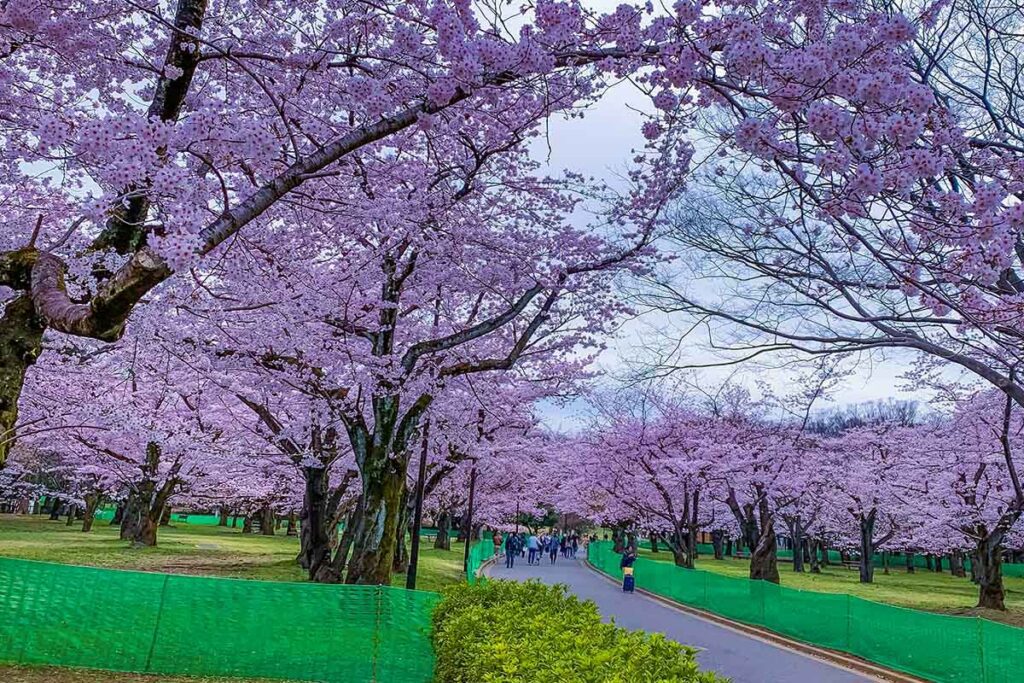
Yoyogi Park is only a few minutes walk from Meiji Shrine’s main entrance. Yoyogi is a historic park where the first flight flew in Japan. At the same time, the park has huge green spaces.
At the same time, Shibuya Crossing near Shibuya Station is a world-famous where the landmark of the Hachiko Statue is located.
Best time to visit:
There is no biggest challenge to visiting Meiji Jingu Shrine. Anytime and every season is great to visit. However, during the event and festival is the best time to visit.
Sometimes, people love going on group tours arranged by some Travel Guide agencies. However, alone or with group tours, it’s worth visiting.
Admission fee:
Free
Meiji Shrine opening hours:
9:00-16:00(generally)
Meiji Shrine opening hours depend on the season. It opens with Sunrise and closes with Sunset.
When days are longer in June, opening time becomes longer(5:00-18:30), and when days are short in December Operation period becomes short (6::40-16:00).
So, Meiji Shrine closing hours also depend on the season. However, if you’re just a visitor, 9:00-16:00 is an excellent time to visit.
Access:
Among the accessible public transportation, the train is the best here. Therefore, I put below how to access Meiji Jingu Shrine by train.
1) Meiji Jingumae Station
Tokyo Metro Chiyoda Line
1 minute walk
2) Harajuku Station
JR Yamanote Line
1 minute walk
3) Kita-Sando Station
Tokyo Metro Fukutoshin Line
5 minutes walk
4) Sangubashi Station
Odakyu Line
3 minutes walk
5) Yoyogi Station
JR Yamanote Line/ JR Chuo Line / Sobu Line / Toei Odeo Line
5 minutes walk
Official website: Meiji Shrine
Book hotel in Tokyo:
